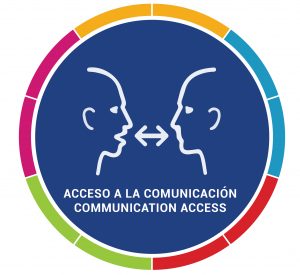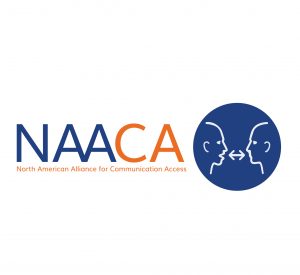Communication Access
 |
 |
Communication Access
People who use AAC have the human right to access, communicate and participate when using all businesses, organizations and events. This includes attending and participating at conferences, meetings and online.
Communication access refers to policies and practices within service entities to ensure that people understand what is said or written and can communicate what they want to convey in face-to-face and telephone interactions, teleconferencing, online learning, meetings, conferences, public consultations, reading (print, websites and digital), and writing (forms, signatures, surveys and notetaking).
Communication access occurs when people who use AAC get accessibility supports they may need to:
- understand what is said
- have their messages understood by others
- use their preferred methods of communication, such as speech; gestures; body language; writing; pictures, symbols, letters; sign language, selecting items on a communication device and/or having someone they trust assist with communication.
- get the time and opportunity to communicate
- get written information in ways they read and understand
- sign documents, take notes and complete forms in ways that are accessible to them
- use an organization’s website and social media
- connect with an organization via telephone or other more accessible ways
Communication access includes:
- Things that service providers can do when interacting with a person who uses AAC
- Things that people who use AAC can do when interacting in different communication situations
- If required, access to a trusted person who can assist with communication
– Barbara Collier for Communication Disabilities Access Canada, 2018
www.cdacanada.com